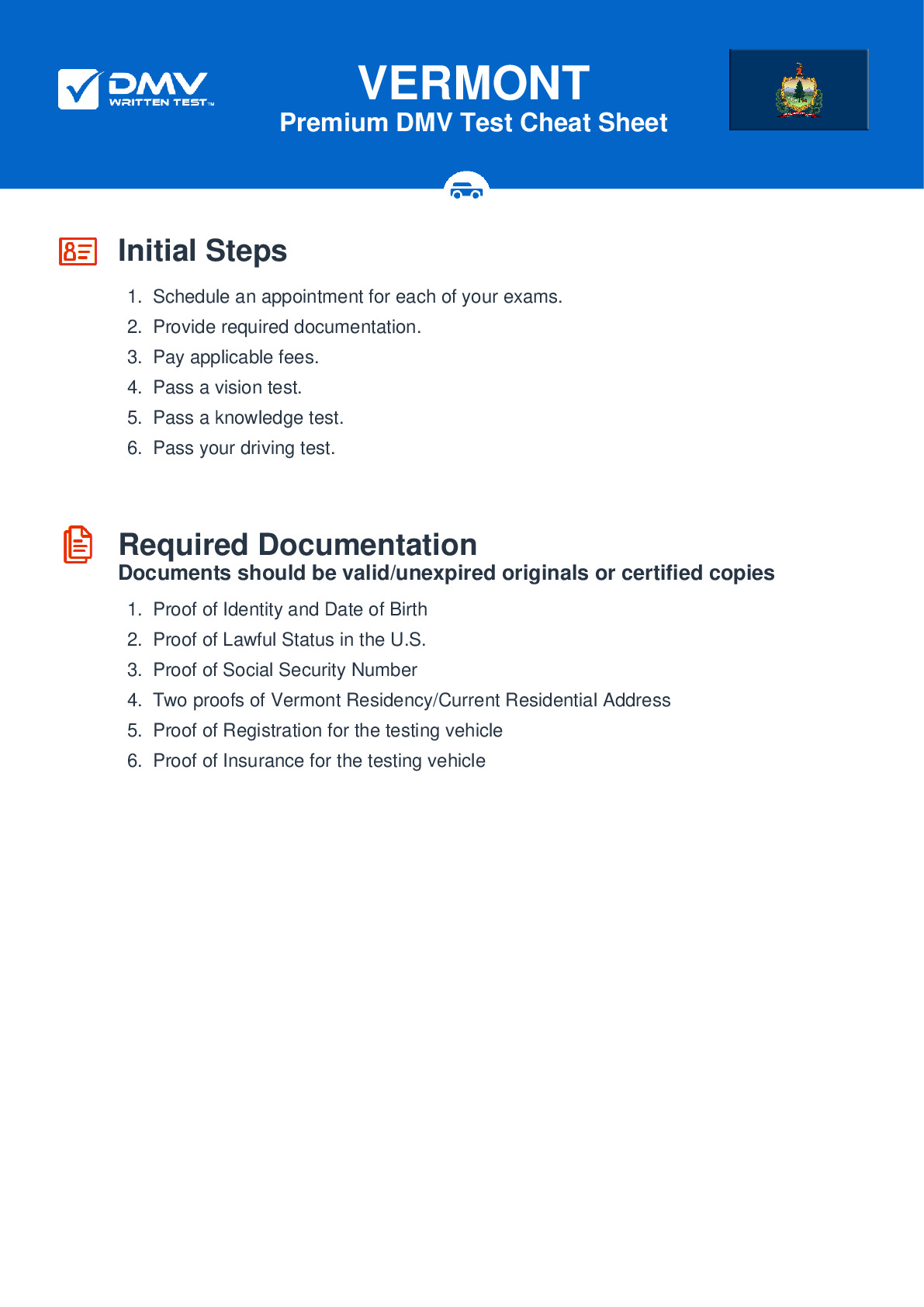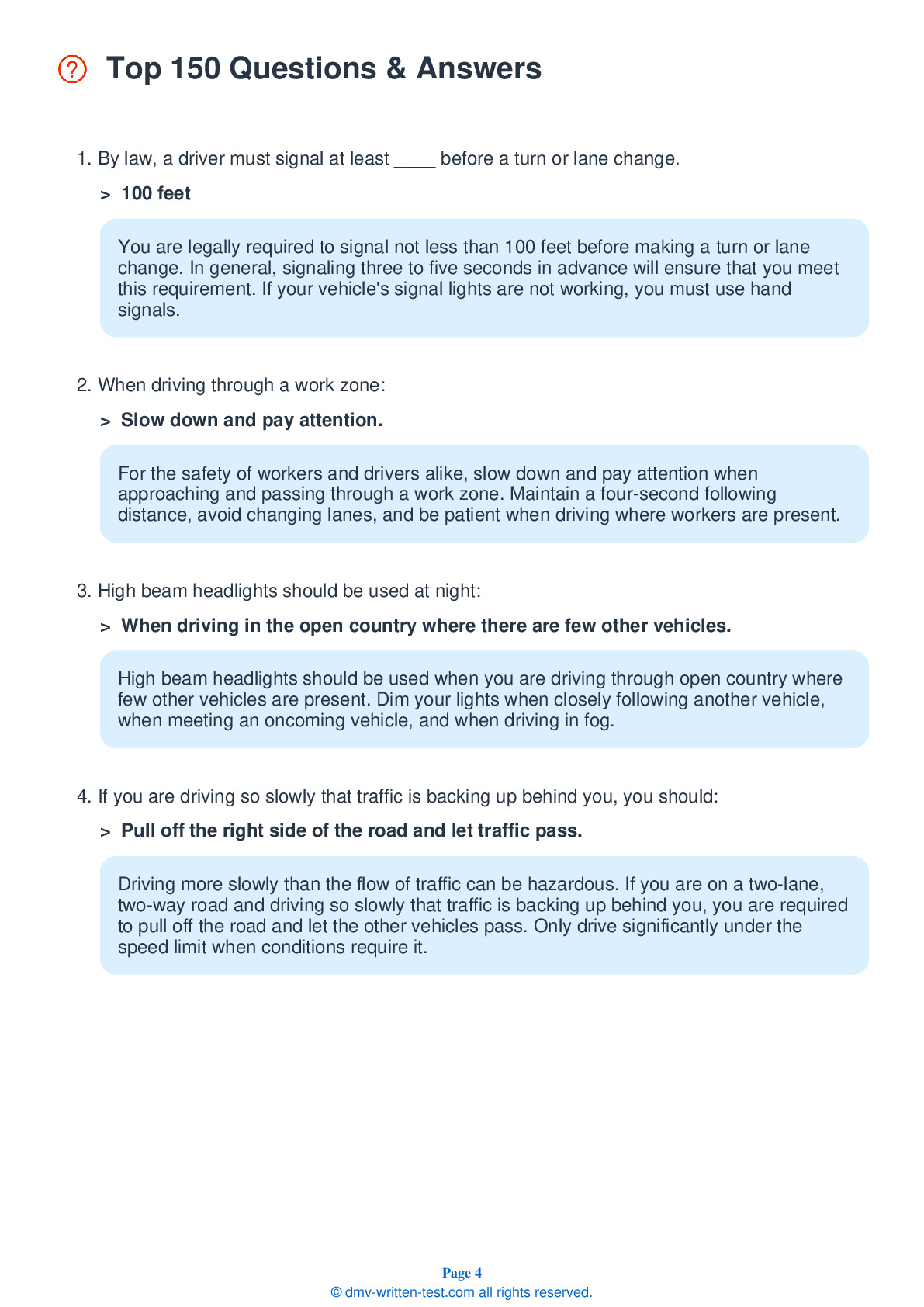2025 Vermont Permit Test 17
The following questions are from real DMV written tests. These are some of the actual permit questions you will face in Vermont. Each permit practice test question has three answer choices. Select one answer for each question and select "grade this section." You can find this button at the bottom of the drivers license quiz. For a complete list of questions and answers for Vermont please visit https://cheat-sheets.dmv-written-test.com/en/vermont/car.
Number of Tests
Number of Question
Passing Score
7. By law, a driver must signal at least ____ before a turn or lane change.
Explanation
You are legally required to signal not less than 100 feet before making a turn or lane change. In general, signaling three to five seconds in advance will ensure that you meet this requirement. If your vehicle's signal lights are not working, you must use hand signals.
8. A driver entering interstate traffic from an entrance or acceleration ramp:
Explanation
If you are on an entrance or acceleration ramp and are entering interstate traffic, you should yield to drivers already on the interstate highway. Merge safely into traffic when you are able to do so.
9. If you are turning onto a street with more than one lane traveling in your direction, you should:
Explanation
When turning onto a street with more than one lane moving in the direction that you are traveling, turn into the lane that is closest to your previous lane. Do not change lanes when turning.
10. When preparing to turn left, drivers should:
Explanation
As you approach a left turn, signal your intentions three to five seconds in advance. Continually check your rearview mirror as you gradually slow down. On a multilane road, move into the left lane before reaching the intersection where you plan to turn. Yield to traffic and pedestrians and turn when your path is clear.
11. Drivers should use extra care when driving near snowplows because:
Explanation
You should be especially careful when driving near snowplows because they are wider and slower than other vehicles. Snowplows often create a cloud of snow, causing visibility in the surrounding area to be lowered.
12. To prepare for anything coming up on the road ahead, you should:
Explanation
Your ability to handle dangerous traffic situations depends largely on searching for and identifying problems before meeting them. Looking far ahead of your vehicle does not mean you should simply stare at the center of the road. You need to continually scan the entire road, including the sides of the road.
13. You may pass another vehicle:
Explanation




